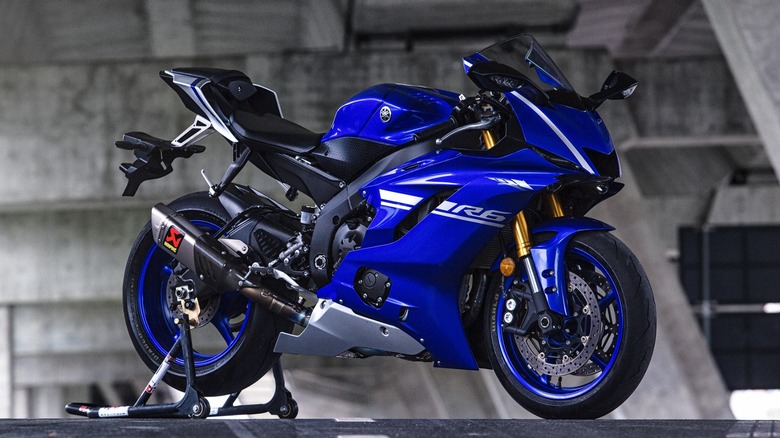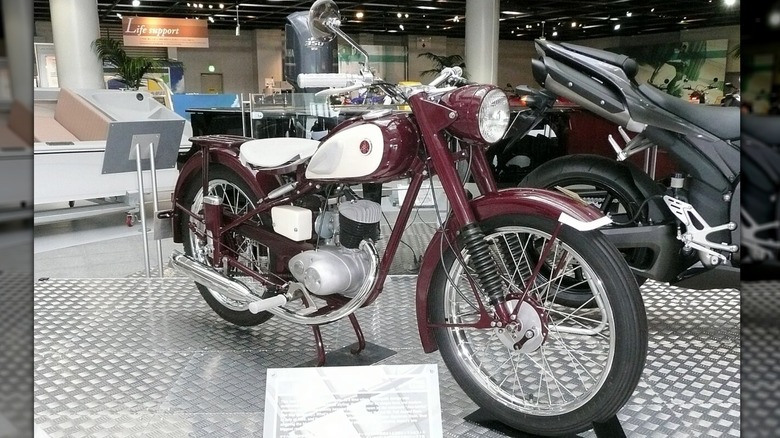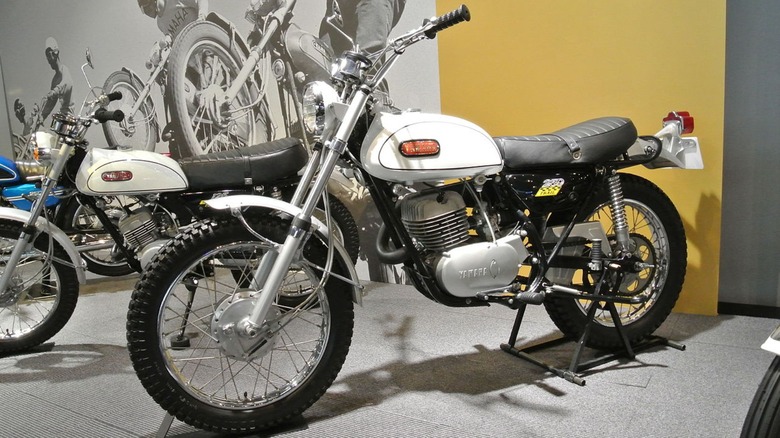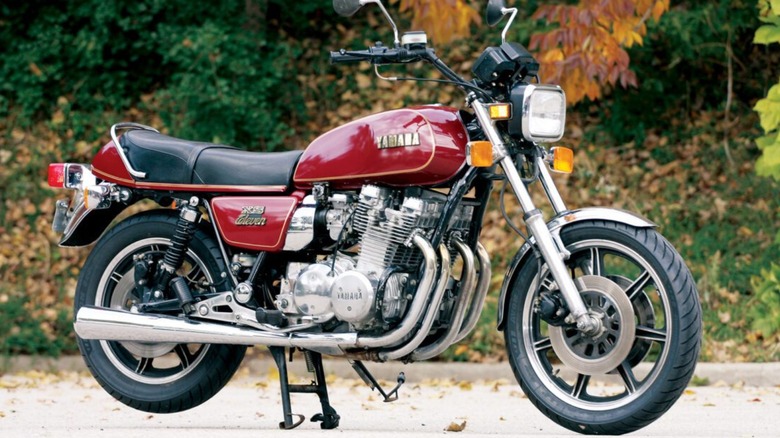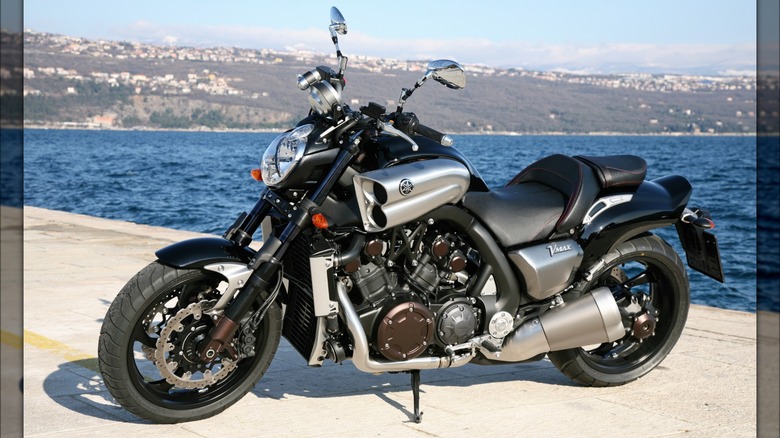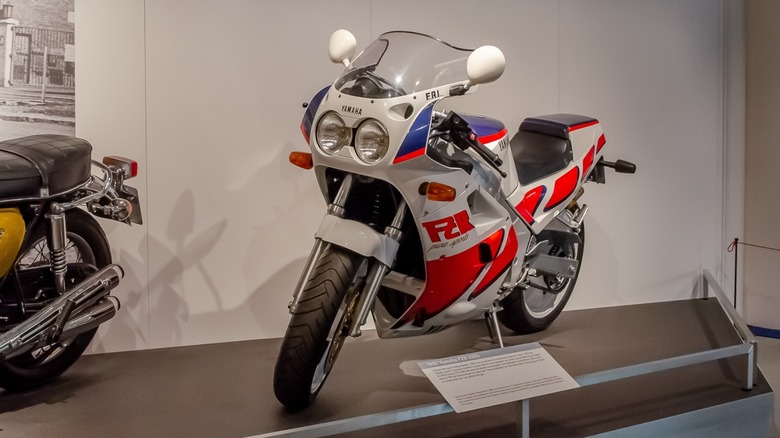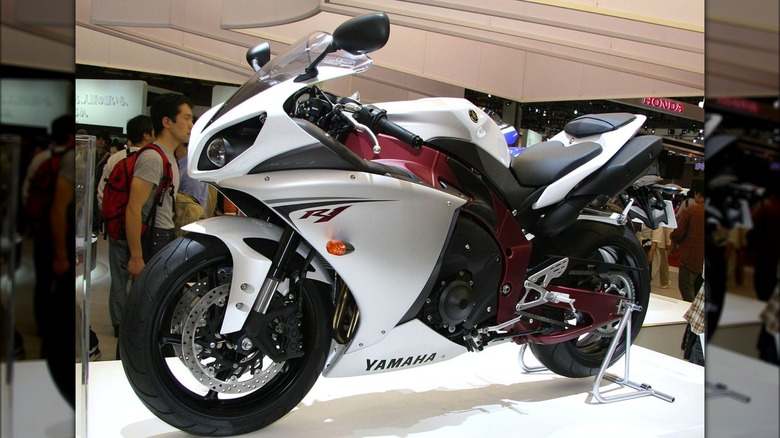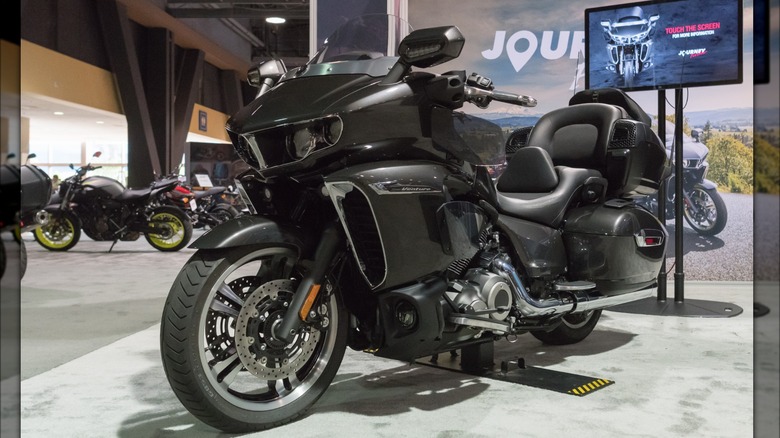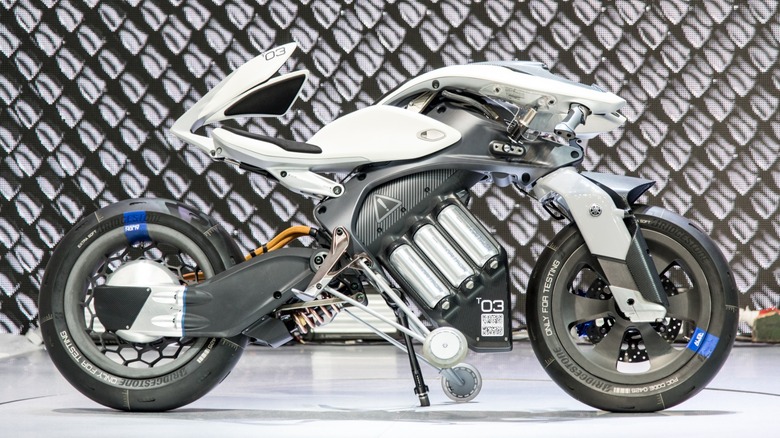Yamaha Motorcycles Through The Years: A Look At The Brand's Evolution
The roots of the Yamaha Motor Co., Ltd. stretch back to the 19th century when a talented craftsman named Torakusu Yamaha sought to make a Japanese-built reed organ that could compete with the Western models being imported into the country at the time. After successfully building his organ, his attention turned to pianos, which were gaining in popularity worldwide. His new company began building upright pianos in the 1890s and eventually designed its first grand piano in 1902. The company grew through World War I and the interwar period, but World War II brought destruction from Allied bombing to all but one factory.
Instrument production resumed after the war, but the company president, Gen'ichi Kawakami, quickly made plans to expand and diversify. Seeing a need for mobility in the war-ravaged country, Kawakami established a motorcycle division in 1955.
The creation of a prototype was fraught from the outset, and though the company suffered from many setbacks in its initial attempts to create a new model, the new motorcycle manufacturer persevered. These early efforts helped Yamaha Motor Company – which was split from the instrument maker Yamaha Corporation years ago — to become a world leader in motorcycle production along with other related products, such as ATVs, personal watercraft, marine engines, and automotive engineering. Today, it is a nearly $9 billion global manufacturing business — this is the evolution of the Japanese giant.
Beginnings of an icon
Motorcycle production exploded across Japan in the early '50s, led by companies formerly involved in the manufacture of military aircraft, including Kawasaki, Mitsubishi, and Honda. Nippon Gakki, the company that would become known as Yamaha, wanted to get in on this industry boom but chose to begin with a regular motorcycle as opposed to the scooters and motorized bicycles the other companies were producing.
Development and the production of a prototype began in 1953. To figure out the best path forward, engineers and designers were sent to Europe where they discovered a perfect basis for their new motorcycle in the German DKW RT125 motorcycle, which was no longer covered by patents due to war reparations. Work commenced on a copy of the DKW — albeit with some notable improvements.
The new bike would have three gears instead of four and the kickstart could be used in any gear as long as the clutch was engaged. The DKW required neutral for starting. By 1955, a production motorcycle was introduced and put on sale to the public, garnering immediate approval from buyers. The Yamaha YA-1, a 2-stroke 125cc full-size motorcycle, proved to be a success and a great start for Yamaha motorcycles.
[Featured image by PekePON via Wikimedia Commons | Cropped and scaled | CC BY-SA 3.0]
Global expansion
With the success of the YA-1, Yamaha's management immediately sought ways to expand the business, turning its eye to the United States as the closest, largest, and most profitable possible market. Cooper Motors started importing the new Yamaha YD-1 250 and MF-1, a step-through 50cc model, in 1958, and Yamaha set up a dealer network in 1960 with an aggressive expansion to follow.
To boost its image, Yamaha participated in racing in the early '60s, claiming 6th place at the Isle of Man TT in 1961 in the 250cc class. This coincided with the expansion of its product offerings and 1960 saw the first Yamaha outboard marine engine go on sale. Though the company was still young, it offered engineering expertise in tuning the engine of the illustrious Toyota 2000GT sports car in 1963 while the product expansion continued with its first snowmobile in 1968.
Yamaha continued to be a leader in the industry with the introduction of the Autolube automatic 2-stroke oil mixer in 1964, but it was in 1968 that Yamaha scored a big win. Yamaha introduced its DT-1 model, which is widely regarded as the first purpose-built dirt bike, setting off a race to win on and off the street by all other manufacturers. By 1968, Yamaha Motor Europe had been established, cementing its position as a global company. Success through the '60s was built on its solid 2-stroke technology, but the 1970s would bring vast changes.
[Featured image by Rainmaker47 via Wikimedia Commons | Cropped and scaled | CC BY-SA 4.0]
Lineup expansion
Through the '60s, Yamaha's motorcycles had been somewhat limited in size and scope. However, 1970 would change everything with the introduction of the company's first 4-stroke motorcycle, which opened up new markets and the opportunities to build increasingly bigger and faster bikes. The new XS-1 650cc motorcycle appeared on the market looking much like the British parallel twins that were popular in the day. While some design tweaks were needed in the first few years — such as adding a front disc brake — the bike became enough of a favorite that it remained in production for more than a decade.
The XS-1 led to the rapid development of a wider range of street bikes while Yamaha dirt bikes continued to win on dirt, claiming a 500cc World Championship in 1975 followed by a win of the Paris-Dakar rally in 1976 with the XT500. The first Japanese cruiser-style bike came from Yamaha in 1978, the XS650 Special, but that perhaps is overshadowed by the shaft-driven 4-cylinder XS1100 in 1978. In less than 10 years, Yamaha had gone from building small two-stroke bikes to large displacement motorcycles suitable for touring the vast American highway system — all while delivering excellent reliability and build quality.
[Featured image by Farmforce via Wikimedia Commons | Cropped and scaled | CC BY-SA 4.0]
Continued innovation
With the computer age rapidly maturing and technology feverishly advancing, the 1980s would be an era in which Yamaha could demonstrate its prowess as a world-class manufacturer. Yamaha implemented its Pan Yamaha Production Management Control (PYMAC) into its now computerized production facilities, followed by expansion into Spain, France, Brazil, and China all within the first few years of the decade.
Yamaha's motorcycles of the era pushed boundaries. The Seca sport bike made its debut alongside the Virago cruiser and Yamaha's first touring model, the Venture Royale, which was its first bike with a liquid-cooled V4 engine. The Venture was a large and comfortable bike that also offered adjustable air suspension and radio for long-distance riding.
However, the stars of this period came in 1984 and 1985. First, Yamaha introduced the FZ750 sport bike featuring the first DOHC engine with five valves-per-cylinder for the company, joining the growing trend of superbike production. The next year came the mighty V-Max, a 1,200 cc V4 cruiser built mostly for the American market that used a novel intake that paired the carburetors and helped the engine to produce a massive 143 horsepower. It was a big brute that captured the attention of American motorcycle buyers so much that it has since become an icon, remaining in production until 2009.
More speed and more changes
Yamaha released the FZR1000 in 1987, keeping it in dealerships into the '90s to provide riders with race track performance in a street-legal package. It was full of advanced engineering derived from Yamaha's GP racing models, raising the bar significantly for fast Yamaha motorcycles. Yamaha also took large steps forward with its technology during this period. The clever GTS1000 touring bike released in 1993 featured a sophisticated hub-centric steering system and, more importantly, was the first bike from Yamaha with electronic fuel injection.
While Yamaha had been a trailblazer in creating Japanese cruisers, they were all midsize machines with distinctively Japanese characteristics. This would change in 1996 with the Yamaha Royal Star, a true American-style big cruiser featuring a big 1300cc V4 engine, extra large fenders, and ample chrome bits. Beginning in 1989, Ford released a high-performance of its mainstream family car called the Taurus SHO. Yamaha's expertise was sought for this project and they built an innovative 32-valve V6 that would remain in use for several years into the '90s.
The '90s closed out with more Yamaha innovation as it developed the first of its 4-stroke dirt bikes. Seeing upcoming emissions restrictions closing in on 2-stroke machines, Yamaha chose to get ahead of the curve and build what is now the standard for supercross racing by releasing the YZ250F in 2001.
Continued development
By the 2000s, the FZR supersport model had been superseded by the YZF. This included the 600cc YZF-R6 and 1,000cc YZF-R1. These bikes offered riders power of 120 and 150 horsepower, respectively, both on extremely lightweight and agile frames. Yamaha continued its innovation when the R1 received fuel injection in 2002 and the R6 received YCC-T (Yamaha Chip-Controlled Throttle), a version of fly-by-wire technology pioneered by Yamaha. Yamaha's continued participation in racing paid dividends through the exposure and prestige that comes from winning while also allowing technology such as YCC-T to filter down to consumer models from racing bikes.
Yamaha's big cruisers introduced in 1996 continued to be a part of the company's success but in 2006, they were rolled into a standalone brand under the Star Motorcycles brand, although they continued to be Yamahas in every meaningful way. Yamaha continued to diversify its product offering throughout the 2000s, introducing new models in all segments. Notable additions include the T-Max maxiscooter, Vino 50 and 125 scooter, new ATVs and side-by-sides, and a range of boats.
Yamaha's continued diversity in this period is represented by the development of the autonomous-navigation RMAX helicopter as well as the UMV uncrewed marine vehicle and the UGV ground vehicle. Furthermore, a project in biotechnology was established in 2000 to develop means for CO₂ reduction. Ultimately, the 2000s demonstrated Yamaha's sophistication as a global manufacturer and a willingness to diversify its products and businesses to continue to hold a leading position in the market. Innovation has always been a hallmark of Yamaha's operations.
A modern manufacturer
Yamaha entered the second decade of the new millennium with a diversified range of products in multiple market segments. Furthermore, advanced technology was further integrated into every model with features such as fuel injection coming standard on all but a handful.
The YZF-R1 was new for 2015 along with the YZF-R1M. This model integrated an array of electronic features adapted from MotoGP racing such as traction control, slide control, anti-wheelie function, launch control, and a unified braking system. Star released the Bolt, a smaller cruiser with an air-cooled twin to compete with Harley-Davidson Sportster models.
However, the Star Motorcycles division was retired in 2016, with all its models folded back into the Yamaha lineup in 2016. Now, all but the Bolt have since been discontinued as it appears Yamaha has chosen to back away from the large cruiser market. This is reinforced by the styling of the 2018 Star Venture, a V-twin tourer that looks like a modern interpretation of a heritage cruiser with far less visible chrome than the bikes produced under the Star badge.
Other recent product innovations from Yamaha include Navione, a power-assisted wheelchair that integrates hub motors into the wheels and uses smart technology to provide the ultimate in mobility assistance. Yamaha has also introduced Motoroid, an advanced self-balancing electric motorcycle that redefines everything you think a motorcycle is or should be. The developments are examples of what is setting up the company for the rapidly changing future of mobility.
Tomorrow's Yamaha
Yamaha currently stands upon a rich heritage of innovation and manufacturing that has built a reputation for quality. The current lineup blends well-established foundations of mechanical engineering with cutting-edge technology, providing modern and world-class products. Furthermore, it has pushed into new areas of research and development, leading to novel technologies outside of its historical product mix.
The current lineup of motorcycles represents a look forward. Yamaha has mostly shed its foray into the cruiser market, Bolt R-Spec and V Star 250 excluded, and concentrated on a core of hyper-modern and sophisticated street bikes along with a robust offering of highly competent street bikes. Completing its offerings are ATVs, side-by-sides, and snowmobiles built to the same standards and a range of marine products from tiny fishing boats to small yachts.
With an investment into electric propulsion already underway, it is just a matter of time before production-ready electric motorcycles will be in Yamaha dealerships, and it looks as if Yamaha will continue to deliver its traditional machines for as long as conditions allow. The Yamaha brand has come a long way from helping to rebuild a war-torn island country with its clever 2-stroke motorcycles. So long as it continues to put quality and innovation forward, Yamaha will be with us for decades to come.
